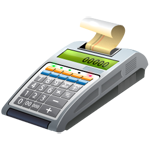Cash Basis vs Accrual Basis
How does Lizzy handle her accounting? The answer to that is that she runs an Accrual Accounting Basis, with a slight exception regarding invoicing.
First – why Accrual Basis?
Well – lets define for you cash-basis vs. accrual-basis accounting. Cash basis is where income is not counted until cash (or a check) is actually received, and expenses are not counted until they are actually paid. Accrual basis is where transactions are counted when the order is made, the item is delivered, or the services occur, regardless of when the money for them (receivables) is actually received or paid ( payables ).
IRS Treasury regulations section 1.446-1(c)(2)(i) says a taxpayer MUST use the accrual method for purchases and sales if he/she is required to account for inventories under IRC ( Internal Revenue Code ) section 471. Section 1.471-1 says any time the production, purchase or sale of merchandise is an income-producing factor in a taxpayer’s business, the taxpayer must consider the merchandise inventory.
You can be eligible for relief ( meaning you can use cash basis ) if you do less than $10 million in gross receipts ( average ) – so long as a) you are not a ‘C’ Corporation ( if so, then its $5 million in gross receipts ), and b) your Principal Business Activity does not fall into the following NAICS codes: Mining ( 211, 212 ) / Manufacturing ( 31 – 33 ) / Wholesale trade ( 42 ) / Retail Trade ( 44-45 ) / Information Industries ( 5111, 5122 ). As vast majority of our customers are a ‘Retail Trade ( 44-45 ), it doesn’t matter what the have in gross receipts, because they keep inventory for the purpose of profit, they are an accrual basis accounting method, so that is how Lizzy handles it.
However, it has been brought up, why do we not have transactions take place when you complete a repair order, or when you complete a job on an invoice? Good questions. In simplistic terms, to make things cleaner, Lizzy only considers it a transaction when you cashier the invoice. Lizzy handles it this way because we, the user, are human beings, and we make mistakes, and un-complete jobs to make changes or add parts, and frequently do so multiple times. We also edit complete invoices that haven’t been cashiered, also adding parts or miscellaneous items to them. To refrain from seeing hundreds of GL transactions for an invoice, because we’ve completed a job, then uncompleted it, made changes, completed it, uncompleted it, made more changes, etc… Lizzy keeps all this at bay by considering it a transaction at the time of cashiering – even if you don’t pay right now ( by putting it on account receivables ).
With this minor exception – Lizzy handles all other accounting processes via the accrual basis method.
If you want to see “Cash basis”, there are several articles you can find via Google that will explain how you can look at your accrual system as if it were cash basis ( involving removing receivables from income, and payables from expenses ).

